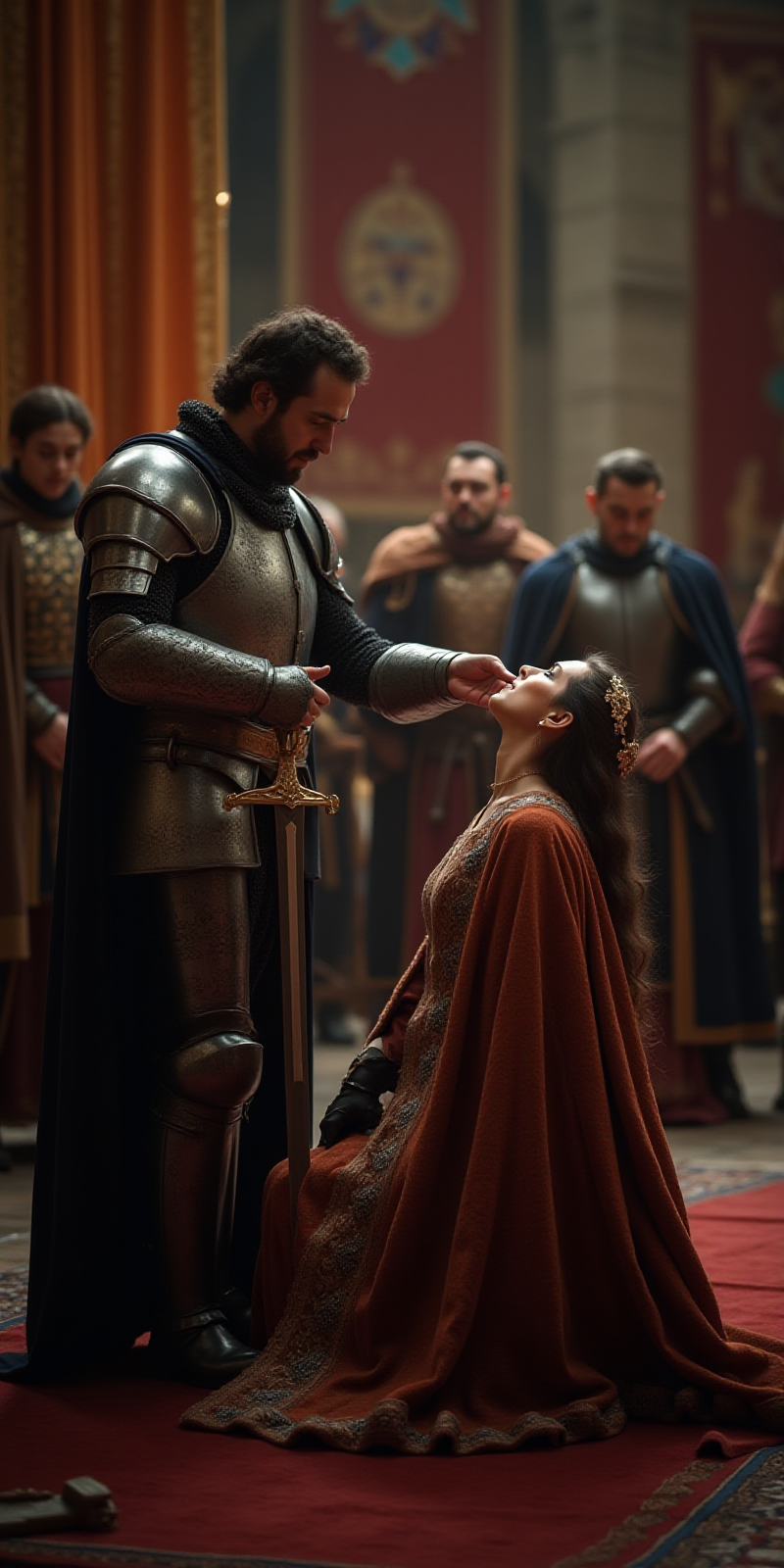Setting: Location: An elegant, historical setting such as a grand hall, a castle courtyard, or an elaborate outdoor scene reminiscent of medieval times. The backdrop could feature historical architecture, banners, and flags to enhance the atmosphere. Participants: Man: The man performing the knighting should be dressed in traditional knightly attire. This includes: Armor: A suit of ornate medieval armor, including a breastplate, gauntlets, and a decorative sword. The armor should be intricately detailed with engravings or family crests. Expression: A serious and respectful expression, reflecting the gravity of the knighting ceremony. Woman: The woman being knighted should be in a position of reverence and pride. She should wear: Attire: A flowing gown or ceremonial robe, possibly with regal colors like deep reds or rich blues, adorned with intricate patterns or embroidery. Her attire should be elegant yet suitable for a ceremonial occasion. Posture: She should be kneeling or standing in a dignified manner, looking up with a mixture of anticipation and pride. Action: Knighting Moment: Capture the exact moment the man is lowering the sword to touch the woman’s shoulder or head. The sword should be held with grace and precision, and the woman's posture should reflect her respect and honor. Details: Focus on the interaction between the sword and the woman, with attention to the precise movement and the ceremonial aspect of the knighting. Details: Facial Expressions: Both the man and the woman should display expressions that reflect the significance of the moment. The man’s face should show solemnity and respect, while the woman’s face should exhibit pride and gratitude. Lighting: Use dramatic and focused lighting to highlight the knighting moment. Soft, ambient light can illuminate the background, while a spotlight can emphasize the participants. Background and Environment: Background: Include historical or medieval elements like banners, tapestries, or a castle wall. Ensure the background complements the central action without distracting from it. Props: Add elements like a ceremonial sword, a velvet cushion for the sword, and any additional ceremonial items like scrolls or insignias to enhance authenticity. Color and Tone: Color Palette: Use rich, vibrant colors for the attire and background to evoke a sense of grandeur and tradition. Deep reds, golds, and blues can enhance the regal nature of the ceremony. Tone: The overall tone should be solemn yet celebratory, capturing the honor and tradition of the knighting ceremony. Photography Techniques: Angle and Framing: Capture the scene from a slightly elevated angle to include both the man and the woman in the frame, ensuring that the sword and the knighting moment are clearly visible. Consider a close-up shot for dramatic emphasis. Focus and Depth of Field: Use a shallow depth of field to keep the focus on the central action, with the background softly blurred to maintain attention on the ceremony. Post-Processing: Enhancements: Adjust contrast and sharpness to emphasize the details of the armor and attire. Enhance the colors to bring out the richness of the fabrics and the gleam of the sword. Details: Fine-tune lighting and shadows to add depth and highlight the ceremonial significance
